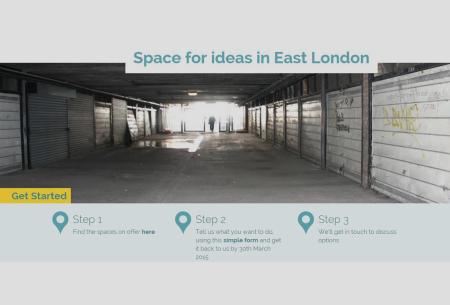
Resource description:
Methodology (accompanied by an online platform) for identifying and activating underused spaces through community-led proposals.
Author/Contact:
TURAS
Expert contact: Jutta Knapp
Advantages:
- A starting point when wanting to achieve a successful revitalization of vacant spaces with the community in mind is to capture, map and understand those underused spaces and decide on strategies how to revitalise them. The "Revitalising Spaces" approach s
- The "Revitalising Spaces" approach is based on a real-life example project that aims to revitalise underused spaces through a more innovative way that aims to achieve community acceptance and to strengthen the community resilience. The project also respon
- Main outcomes: knowledge/data, physical improvements, economic benefit, stakeholder integration, process innovation, community empowerment.
Constraints:
- Vacant or underused assets are not just an economic and social loss of important urban space but often also affect the neighbouring buildings and wider area in terms of a bad image and sense of place, a decrease of property value and a risk of weakening t
- Not just the community but also the individual landlords fear vacancies as their duties do not stop once space is unoccupied. The Duty of Care remains and the risk of fire and flood are a real possibility in unoccupied spaces and if not covered properly c
Uses of this resource:
Every local authority is most likely familiar with the problems that arise with underused and vacant spaces in urban areas, including their numerous explanations and reasons such as for example planned redevelopments or refurbishments, endings of leases, bad property management, etc.
As the problem of vacant spaces is deeply established local authorities do try tackling it already for quite a while. However, this tends to happen in the traditional way of dictating new uses to existing communities that often do not find acceptance and thus cannot survive, which wastes a lot of money, effort, and the opportunities to strengthen the local community resilience.
Additional information:
WHO SHOULD BE INVOLVED?
FACILITATORY (PUBLIC) BODIES:
asset management department; socio-economic development department; land use planning department; community development department; planning and development department; urban regeneration department
LOCAL TASK FORCE:
local or regional authority; professional expert; landowners; community group; entrepreneur
SUITABLE FOR:
dense inner city; brownfield development site; underused urban site & building; (sub-)urban communities
MAIN NECESSARY RESOURCES ARE:
local knowledge; expert knowledge; community trust; personnel time; space; monetary investments; public institutional set-up
Licence:
- Free, no licence
Development stage:
- Full, working product